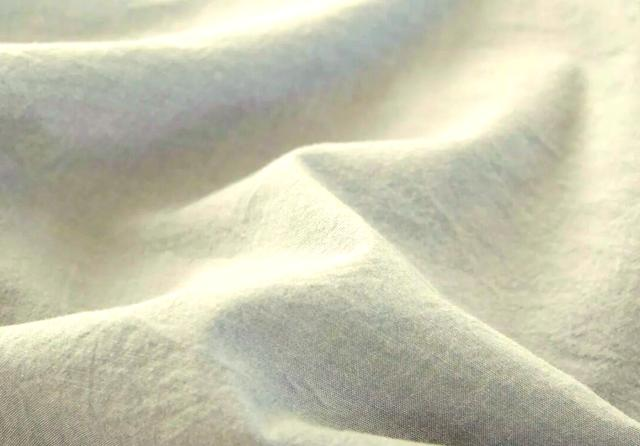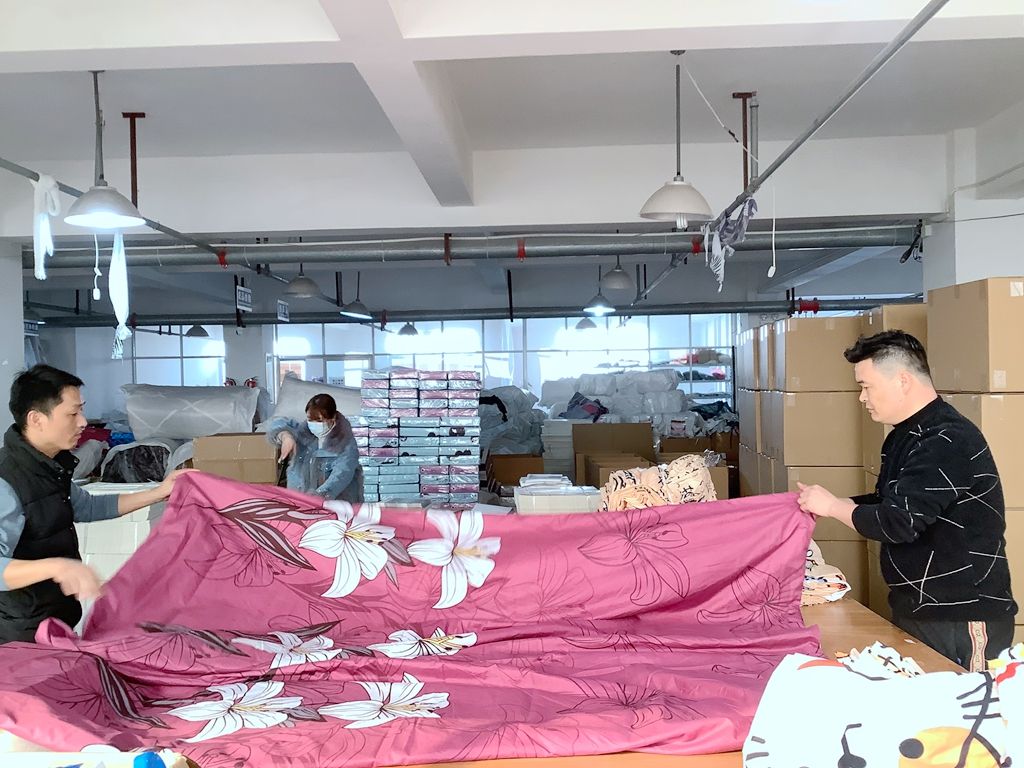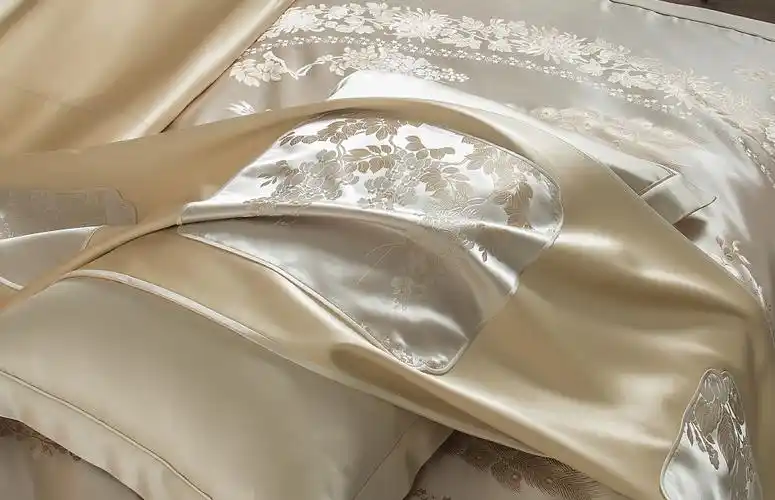Choosing the ideal Bedding Fabrics is key to enhancing sleep quality. Different materials vary significantly in touch, breathability, temperature regulation, and ease of care. Cotton is a dominant choice due to its balanced comfort, while Tencel™ (Lyocell) is highly favoured for its silky, cool feel and eco-friendly properties. Understanding the characteristics of each fabric helps you make an informed decision best suited for your needs.
Fabric Characteristics at a Glance
The table below provides a concise comparison of several mainstream fabrics:
| Fabric Type | Core Advantages | Core Disadvantages | Ideal For |
|---|---|---|---|
| Cotton | Breathable, absorbent, durable, hypoallergenic | Prone to wrinkling, shrinkage (low quality) | Almost everyone, value seekers |
| Tencel (Lyocell) | Extremely silky, cool, highly moisture-wicking, sustainable | Higher price point, requires gentle washing | Hot sleepers, sensitive skin, environmentalists |
| Linen | Ultra-breathable, moisture-wicking, very durable | Rougher initial feel, wrinkles extremely easily | Hot sleepers, humid climates, those seeking natural texture |
| Silk | Luxurious, skin/hair friendly, temp-regulating | Very expensive, delicate care, prone to snagging | Those seeking ultimate luxury, sensitive skin |
Cotton Fabrics: The Classic Choice
Cotton is the most popular bedding material globally, highly regarded for its excellent balance of properties. It is natural, breathable, and highly absorbent, effectively wicking away moisture and sweat produced during the night to keep the skin dry. Cotton fabrics are generally very durable, easy to care for, and naturally hypoallergenic, making them an ideal choice for sensitive skin.
At Vanyo, we deeply understand the importance of fabric for sleep. We select the world’s top long-staple cotton and Lyocell fibers, dedicating ourselves to providing high-quality bedding that combines a luxurious feel with an eco-friendly concept, helping every customer find their perfect sleep companion.
Combed Cotton

Combed cotton is an upgraded version of regular cotton. During the spinning process, a “combing” procedure removes shorter fibres and impurities, leaving behind only longer, stronger, and smoother strands. This results in a combed cotton fabric that is softer and smoother than regular cotton (carded cotton), significantly reducing the likelihood of pilling and increasing durability.
- Advantages: Soft and delicate touch, stronger durability, less pilling.
- Disadvantages: Slightly higher price than regular cotton.
- Ideal For: Individuals seeking a good balance of value and superior sleep comfort.
Long-Staple Cotton: Pima and Egyptian Cotton
Long-staple cotton represents the highest quality of cotton, with fibre lengths significantly longer than standard cotton. Longer fibres allow for the spinning of finer, stronger yarns, resulting in fabrics with a silky lustre, exceptional softness, and outstanding durability. The two most famous types of long-staple cotton are Pima Cotton (mainly grown in the USA) and Egyptian Cotton.
Egyptian Cotton, in particular, is often referred to as “cotton gold.” Its extra-long staples create unmatched softness and breathability. When selecting, pay attention to certifications to ensure you are purchasing genuine long-staple cotton products.
- Advantages: Ultimate softness, strong lustre, excellent breathability, highly durable.
- Disadvantages: Expensive.
- Ideal For: Those seeking a premium, luxurious sleep experience with a generous budget.
Washed Cotton

Washed cotton is not a specific cotton variety but a post-treatment process. The fabric undergoes a special industrial washing treatment after production, which gives its surface a natural, slightly wrinkled appearance and a softer shade. Washed cotton feels softer than regular cotton, offering a “lived-in” comfort and vintage texture, and is less prone to shrinking or losing shape.
- Advantages: Soft touch, naturally casual appearance, less shrinkage.
- Disadvantages: Less smooth visually than sateen cotton.
- Ideal For: Those who favour Japanese, Muji-style, or Wabi-Sabi aesthetics.
Tencel™ (Lyocell): Silky and Cool Comfort
Tencel™ is the brand name for Lyocell fibre produced by the Austrian company Lenzing. It is a regenerative cellulose fibre derived from sustainably managed wood pulp (often eucalyptus), created through an environmentally responsible closed-loop process. Tencel™ is known for its incredible softness and silky touch, often compared to silk.
Its most significant feature is its outstanding moisture-wicking capability, which far exceeds that of cotton. It quickly draws moisture away from the skin, providing a cool and dry sleeping environment. Furthermore, its smooth fibre surface gives it natural antibacterial and anti-allergic properties.
- Advantages: Extremely silky, cool to the touch, highly moisture-wicking, sustainable, anti-allergic.
- Disadvantages: Higher price, prone to pilling or wrinkling if not washed gently.
- Ideal For: Hot sleepers (who sweat easily), sensitive skin, and environmentally conscious consumers.
Linen: The King of Breathability
Linen is an ancient and luxurious natural fibre derived from the flax plant stem. Linen fabric is celebrated for its unmatched breathability and durability. Its hollow fibres offer excellent thermal conductivity, making it the perfect choice for hot and humid climates, providing a lasting cooling sensation. Linen wicks away moisture very quickly and does not retain wetness like cotton can.
Another unique characteristic of linen is that it “gets softer with every wash.” Over time, its texture becomes increasingly supple and comfortable. Its natural wrinkling is also part of its unique aesthetic, creating a relaxed, rustic atmosphere.
- Advantages: Ultimate breathability, quick-drying, extremely durable, naturally antibacterial, softens over time.
- Disadvantages: High price, rougher texture initially, wrinkles very easily.
- Ideal For: Extreme hot sleepers, residents of humid areas, and those who appreciate natural and rustic aesthetics.
Silk: The Luxurious Experience

Silk (typically Mulberry silk) is a natural protein fibre spun by silkworms, considered the most luxurious bedding fabric. Its surface is exceptionally smooth, minimizing friction against the skin and hair, which helps reduce facial wrinkles and hair frizz. It is a natural temperature regulator, keeping you cool in the heat and warm in the cold.
Silk is naturally hypoallergenic and antibacterial, making it beneficial for allergy and asthma sufferers. However, its delicate nature makes its care very costly, usually requiring professional dry cleaning or very careful hand washing.
- Advantages: Extremely smooth (good for skin/hair), warm in winter/cool in summer, naturally hypoallergenic, luxurious appearance.
- Disadvantages: Extremely expensive, difficult to care for, prone to fading and snagging.
- Ideal For: Those seeking the ultimate luxury experience, focused on skin and hair care, with a high budget.
Polyester / Microfiber
Polyester is a synthetic fabric. Microfiber is typically made from extremely fine polyester threads. The greatest advantage of these materials is their low cost, extreme durability, and wrinkle resistance. They are easy to wash, dry quickly, and resist fading.
However, the drawbacks of polyester are quite evident. As a plastic-based fabric, it is virtually non-breathable and non-absorbent, prone to trapping heat and sweat, leading to a hot and stuffy sleeping environment. It can also generate static electricity, attracting dust and hair.
- Advantages: Inexpensive, very durable, wrinkle-resistant, easy to care for.
- Disadvantages: Non-breathable, non-absorbent, traps heat, prone to static, not environmentally friendly.
- Ideal For: Very low budgets, children’s rooms, or temporary bedding.
Bamboo Fiber
Bamboo fibre fabric (usually Bamboo Viscose or Bamboo Lyocell) has gained popularity recently for its softness and sustainability claims. Its feel is often described as between cotton and silk—very soft—and it offers good breathability and absorbency, giving it a natural cooling effect.
While bamboo itself grows quickly and is eco-friendly, processing it into fibre (especially the viscose method) can involve harsh chemicals. The Bamboo Lyocell process is more sustainable, similar to Tencel™.
- Advantages: Very soft, good breathability, naturally antibacterial, absorbent.
- Disadvantages: May be less durable than cotton, some processing methods are less eco-friendly, medium-to-high price.
- Ideal For: Those who prefer a soft feel, prone to allergies, seeking a natural alternative to cotton.
Flannel: Winter Warmth
Flannel is typically made from cotton or wool, characterized by a “napped” finish. This process raises tiny fibres on the surface of the fabric, creating an insulating air layer that gives it excellent warmth and a soft, fuzzy touch.
Flannel is the perfect choice for cold winters or chilly regions. Its quality is measured by weight (GSM, grams per square meter) rather than thread count; a higher GSM indicates greater warmth and thickness.
- Advantages: Highly insulating, soft, and cozy touch.
- Disadvantages: Only suitable for cold weather, prone to pilling, bulky.
- Ideal For: Individuals who get cold easily, winter use.
Jersey Knit: T-Shirt Comfort
Jersey knit cotton differs from most bedding fabrics in that it is “knitted” like a T-shirt or sweatshirt, rather than “woven.” This gives it a natural stretch and an extremely soft, skin-hugging feel, like sleeping in your favourite old T-shirt.
It offers decent breathability but is also warmer than percale cotton. The drawback is that it may not be as durable as woven fabrics and is prone to stretching out of shape or shrinking.
- Advantages: Extremely soft, stretchy, skin-friendly, casual comfort.
- Disadvantages: Prone to losing shape or shrinking, average durability.
- Ideal For: Those who love the feel of a T-shirt and seek relaxed comfort.
Fabric Weaves: Percale and Sateen
Finally, even with the same cotton fibre, different weaving techniques result in vastly different experiences. The two most common weaves are Percale and Sateen.
Percale: Uses a simple one-over, one-under grid pattern. This structure makes the fabric very breathable, resulting in a smooth, dry, and crisp touch, often described as having a “crinkle” like high-end hotel sheets. It is ideal for hot sleepers.
Sateen: Uses a four-over, one-under pattern. This structure exposes more threads on the surface, creating a denser, heavier fabric with a natural lustre. Sateen feels silky smooth, drapes well, and is warmer. However, it may be less durable than percale and more prone to snagging.
Ideal For: Hot sleepers should choose Percale; those who get cold easily or seek a silky feel should choose Sateen.
Percale Advantages: Ultimate breathability, cool, crisp and dry, durable.
Sateen Advantages: Silky smooth, lustrous, warmer, slightly more wrinkle-resistant.


